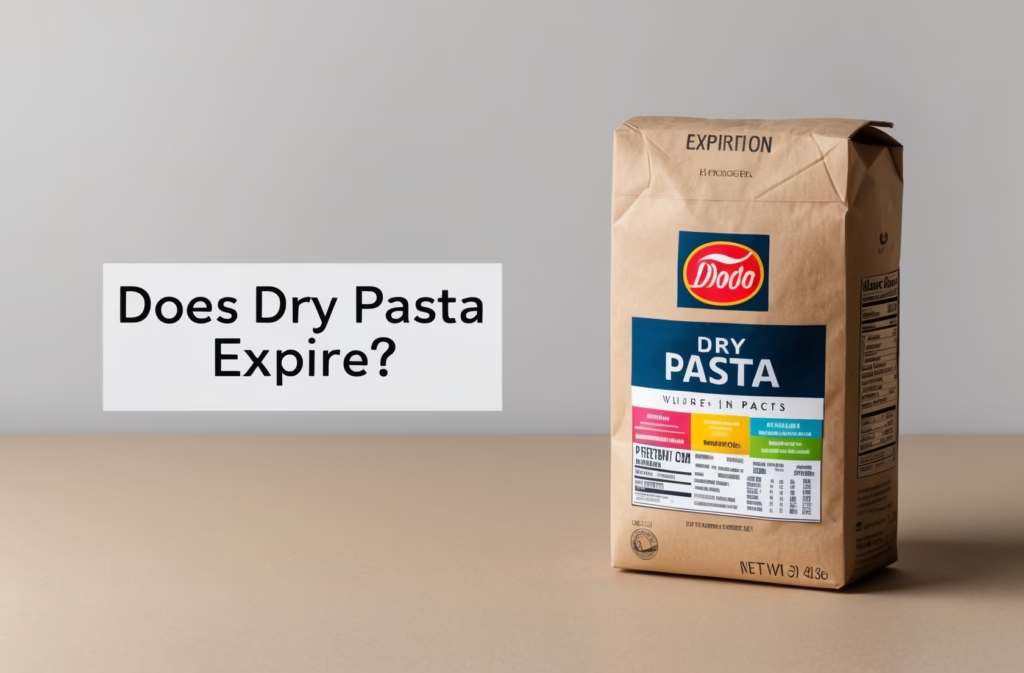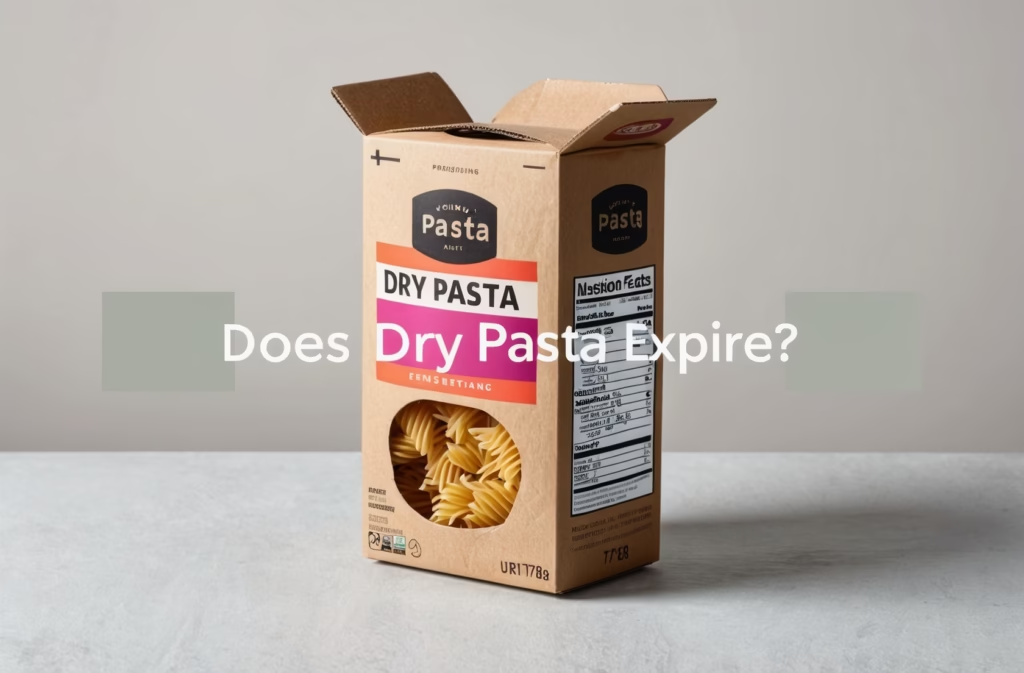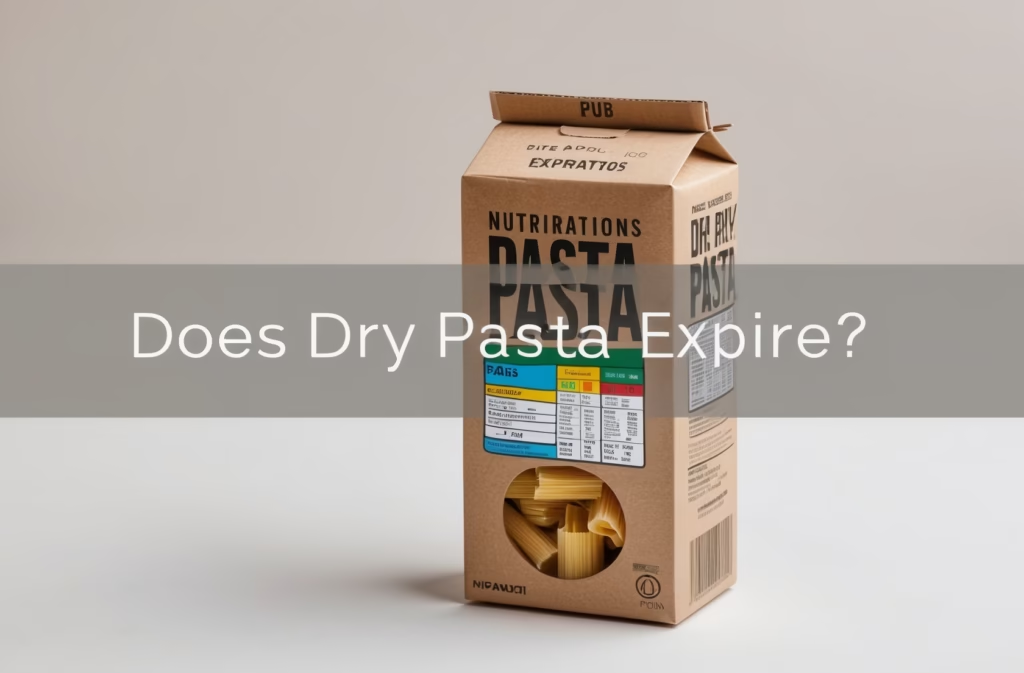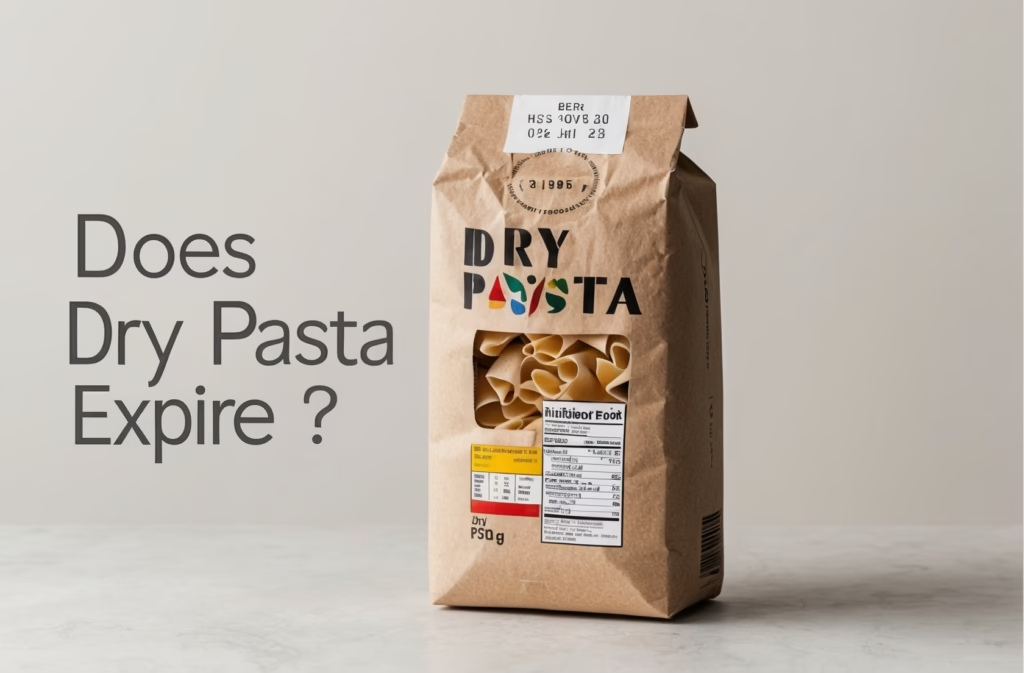Can Dry Pasta Expire

Can Dry Pasta Expire? Learn about dry pasta shelf life and what to do with expired dry pasta! Discover how to tell if your pasta is still good and get delicious recipe ideas to use up any potentially older noodles. Avoid waste and enjoy perfectly cooked pasta every time!
Can Dry Pasta Expire? Understanding Dry Pasta Shelf Life and Expired Dry Pasta
We all have that box of pasta lurking in the back of our pantry. But how long does it actually last? The question, “Can dry pasta expire?,” is surprisingly common, and the answer isn’t as straightforward as you might think. Understanding dry pasta shelf life is key to avoiding food waste and ensuring your culinary creations are always delicious. This comprehensive guide will delve into the intricacies of expired dry pasta, its storage, and how to tell if it’s still safe to eat.
Dry Pasta Shelf Life: The Basics
Unlike fresh pasta, which needs to be refrigerated and consumed within a few days, dry pasta boasts an impressively long shelf life. Generally, unopened dry pasta can last for two to three years past its “best by” date, provided it’s stored correctly. This is because the drying process significantly reduces moisture content, making it a less hospitable environment for bacteria and mold growth. However, this doesn’t mean it’s indestructible. The quality will gradually decline over time, and eventually, it may become undesirable to eat.
The “best by” date on your pasta package isn’t a hard and fast expiration date indicating immediate spoilage. It signifies the point at which the manufacturer guarantees optimal flavor and texture. After this date, the pasta might be slightly less palatable, losing some of its springiness or developing a slightly off flavor. However, it likely won’t be unsafe to consume.
Factors Affecting Dry Pasta Shelf Life
Several factors influence how long your dry pasta stays fresh and enjoyable. Proper storage is paramount. Store your pasta in a cool, dry, and dark place, away from direct sunlight and moisture. A tightly sealed container is ideal, preventing exposure to air and preventing pests.
The type of pasta can also play a role. Pasta made with whole wheat flour may have a slightly shorter shelf life than pasta made with refined flour due to the higher fat content in whole wheat. However, the differences are relatively minor, and both types still retain their edibility well beyond the “best by” date with proper storage.
Consider this example: You’ve stored your pasta perfectly, and you’re planning a delicious meal of Penne Alla Vodka. However, if you notice a strong, off-putting smell or a visible presence of mold, discard the pasta immediately, regardless of the “best by” date.
How to Tell if Your Dry Pasta Has Expired
While the “best by” date offers guidance, it’s crucial to use your senses to determine the condition of your pasta. Before using any pasta, inspect it carefully:
- Smell: Does it have a rancid or musty odor? If so, it’s time to throw it away. A slightly off smell doesn’t necessarily mean the pasta is unsafe but will likely impact the taste and texture.
- Appearance: Look for signs of discoloration, unusual spots, or the presence of any insects or mold. Even small signs of infestation can compromise the pasta’s safety and flavor.
- Texture: If you break a piece of pasta, does it feel brittle or powdery? Over time, dry pasta can lose its elasticity and become crumbly. While still probably safe, the texture might be unpleasant.
- Taste Test (with caution): If you are unsure, cook a small portion to taste. If you detect any unpleasant taste, you know better than to prepare the entire package.
Understanding “Expired Dry Pasta”
The term “expired dry pasta” is a bit misleading. While the quality diminishes over time, the risk of serious food poisoning from eating pasta that is past its “best by” date is low, especially if it has been stored properly. However, the flavor and texture will suffer, leading to a less enjoyable culinary experience.
Imagine using old, expired dry pasta to make Fettuccine Alfredo. The difference in texture could significantly impact the dish’s overall appeal. The creamy sauce paired with mushy pasta wouldn’t be a pleasurable experience.
Extending the Shelf Life of Dry Pasta
Proper storage is the most effective way to prolong the shelf life of your dry pasta. Storing pasta in an airtight container in a cool, dark, and dry environment is crucial. Avoid storing it in areas with high humidity, such as near the sink or stove.
Freezing dry pasta is generally not recommended as it doesn’t significantly extend its shelf life and can potentially affect its texture. However, once cooked, pasta can be successfully frozen for later use in dishes like Spaghetti Carbonara.
Is it Safe to Eat Expired Dry Pasta? A Balanced Perspective
The safety of expired dry pasta depends largely on its storage conditions and the signs of spoilage. If the pasta has been stored properly in a cool, dry place, and you don’t notice any unusual smells, discoloration, or insect infestation, it’s likely still safe to consume, although the taste and texture might have suffered. However, it’s better to err on the side of caution. If in doubt, throw it away.
Using stale pasta in dishes like Tortellini in Brodo, where the pasta is the secondary ingredient, may not be as noticeable as in recipes where the pasta is the star. Still, using fresh, high-quality pasta is always recommended for the best results.
Dry Pasta Storage: Best Practices
For optimal pasta preservation, consider these storage strategies:
- Airtight Containers: Transfer pasta from its original packaging to an airtight container to maximize protection from moisture and pests.
- Cool, Dark, Dry Place: Avoid storing pasta in humid environments or areas exposed to direct sunlight.
- First In, First Out (FIFO): Rotate your pasta stock, using the oldest packages first to ensure you avoid letting pasta linger in the pantry for extended periods.
Even if you follow these best practices, always inspect your pasta before using it. A visual and olfactory check can prevent any unpleasant surprises during cooking. Remember that perfectly stored pasta can still lose some quality over time; prioritizing fresh pasta when possible is always the best approach for the optimal culinary experience.
Dry Pasta vs. Fresh Pasta: Shelf Life Comparison
The key difference between dry and fresh pasta lies in their moisture content. Fresh pasta, due to its high moisture, has a significantly shorter shelf life, typically only lasting a few days in the refrigerator. In contrast, dry pasta’s low moisture content contributes to its much longer shelf life of two to three years when stored correctly. This difference in shelf life explains why dry pasta is a pantry staple and fresh pasta requires timely consumption.
Preparing a delicate dish like Linguine with Lobster requires high-quality pasta, and fresh pasta will always offer the superior texture and taste. While dry pasta can certainly be used, it might not be the ideal choice for dishes that demand specific textures.
External Resources for Further Information
For additional information on food safety and storage, you can consult these reliable sources:
Food and Drug Administration (FDA) – The FDA provides comprehensive guidelines on food safety, storage, and handling.
Eat By Date – This website offers detailed information on the shelf life of various food items, including pasta.
Conclusion: Making Informed Decisions About Your Pasta
So, can dry pasta expire? The answer is nuanced. While it won’t spoil and cause immediate illness in the same way as perishable foods, its quality will deteriorate over time. By understanding dry pasta shelf life, paying attention to visual and olfactory cues, and employing proper storage techniques, you can extend its usability and avoid food waste. Remember that prioritizing fresh pasta where possible always delivers the best culinary results. However, using appropriately stored older pasta is often acceptable, depending on the dish you are preparing.
Now that you’re a dry pasta expert, go forth and create delicious dishes! Don’t forget to share your pasta-related experiences in the comments section below, and let us know which dishes you’ve made with your “older” pasta!

FAQ: Can Dry Pasta Expire?
Q: Does dry pasta actually expire?
A: While dry pasta doesn’t “expire” in the sense it becomes unsafe to eat, its quality degrades over time. Its shelf life is quite long, but its flavor and texture can change.Q: What is the typical dry pasta shelf life?
A: The typical dry pasta shelf life is 2-3 years, though it can remain edible longer. Check the “best by” date on the packaging for guidance.Q: Can I eat expired dry pasta?
A: You can likely still eat expired dry pasta if it’s been stored properly (dry, cool, and dark), though the texture might be more brittle and the flavor may be slightly affected. Inspect it carefully for any signs of infestation.
Q: How can I tell if my dry pasta has gone bad?
A: Signs of spoiled dry pasta include discoloration, an unusual smell (musty or rancid), the presence of insects, or excessive brittleness.Q: Does storing dry pasta in the refrigerator extend its shelf life?
A: No, refrigeration isn’t necessary for dry pasta. A cool, dark, and dry pantry is ideal. Refrigeration can actually increase the risk of moisture absorption.Q: My dry pasta has a strange smell, is it still safe to eat?
A: If your dry pasta has a musty or rancid smell, it’s best to discard it. An unusual odor indicates potential spoilage.
Q: What happens to dry pasta after its “best by” date?
A: After the “best by” date on dry pasta, the quality starts to decline noticeably. It may become drier, more brittle, and lose some of its flavor. It’s not necessarily unsafe, but the eating experience is likely to be less enjoyable.Q: How long can I store dry pasta in an airtight container?
A: Storing dry pasta in an airtight container can help maintain its quality and protect it from moisture and pests, potentially extending its shelf life slightly beyond the best-by date. However, it won’t indefinitely prevent degradation.Q: Is there a difference in Dry Pasta Shelf Life between different types of pasta?
A: Generally, the shelf life of different dry pasta types (spaghetti, penne, etc.) is similar. However, pasta made with whole wheat or other alternative flours might have a shorter shelf life.
- Q: I found some old dry pasta in my cupboard; how can I test its quality before cooking?
A: Before cooking, visually inspect the pasta for any signs of damage, discoloration, or pests. Cook a small amount to check the texture and taste before committing to the whole package. If it tastes or feels off, discard it.

Can Dry Pasta Expire? Understanding Dry Pasta Shelf Life and Expired Dry Pasta
We’ve all been there: rummaging through the pantry, uncovering a forgotten box of pasta. The question immediately pops up: Can dry pasta expire? The answer is more nuanced than a simple yes or no. While dry pasta doesn’t technically “expire” in the same way perishable foods do, its quality and palatability can degrade over time. Understanding dry pasta shelf life is key to ensuring you’re enjoying the best possible pasta dishes.
Dry Pasta Shelf Life: How Long Does Dry Pasta Last?
The dry pasta shelf life is surprisingly long. An unopened box of dry pasta, stored properly in a cool, dry, and dark place, can typically last for two to three years past its “best by” date. This date indicates when the manufacturer believes the pasta will be at its peak quality, not when it becomes unsafe to eat. However, after this date, the pasta may start to lose its flavor and texture. It might become drier, more brittle, and potentially develop a slightly off flavor. This doesn’t necessarily mean it’s unsafe, just less enjoyable.
Factors influencing dry pasta shelf life include storage conditions. Exposure to moisture, heat, or light can significantly shorten the lifespan of your pasta. If you store your pasta in a damp or humid environment, it might become moldy before the “best by” date. Therefore, proper storage is essential for maximizing its longevity.
Can You Eat Expired Dry Pasta?
The question of eating expired dry pasta is a common one. While it is unlikely to cause food poisoning, the experience will likely be less than ideal. If the pasta is significantly past its “best by” date and you notice any signs of spoilage such as mold, discoloration, or a rancid smell, it’s best to discard it. Even if it looks and smells fine, it might have lost significant flavor and texture.
Think about this: Would you want to make Penne alla Vodka with pasta that tastes stale and lacks its usual bite? Probably not! The best way to ensure a delicious pasta experience is to use pasta within its recommended timeframe.
How to Store Dry Pasta for Optimal Shelf Life
Proper storage is paramount to extending the dry pasta shelf life. Here are some tips:
- Store in a cool, dry, and dark place: Avoid direct sunlight and high humidity areas, such as near the sink or stove.
- Use airtight containers: Transfer pasta from its original packaging to an airtight container to protect it further from moisture and pests.
- Check regularly: Periodically inspect your pasta for any signs of spoilage before use.
By following these simple steps, you can ensure your pasta remains fresh and flavorful for as long as possible. Remember, a high-quality pasta dish, like Fettuccine Alfredo, deserves fresh, flavorful pasta.
Recipe: Simple Tomato and Basil Pasta
This simple recipe is a great way to use up any dry pasta, regardless of its age (within reason, of course!).
Ingredients (serves 2):
- 8 oz dry pasta (any shape)
- 1 tbsp olive oil
- 2 cloves garlic, minced
- 1 (28 oz) can crushed tomatoes
- 1 tsp dried oregano
- 1/2 tsp salt
- 1/4 tsp black pepper
- 1/4 cup fresh basil, chopped
- Grated Parmesan cheese (optional)
Instructions:
- Cook pasta according to package directions.
- While pasta cooks, heat olive oil in a saucepan over medium heat. Add minced garlic and cook for about 1 minute, until fragrant.
- Stir in crushed tomatoes, oregano, salt, and pepper. Bring to a simmer and cook for 10-15 minutes, stirring occasionally, until sauce has thickened slightly.
- Drain pasta and add it to the sauce. Toss to coat.
- Stir in fresh basil.
- Serve immediately, topped with grated Parmesan cheese, if desired.
This recipe is simple yet satisfying. It’s a great base to build on – try adding some Italian sausage or meatballs for a heartier meal! If you’re feeling ambitious, you could try more complex pasta dishes like Spaghetti Carbonara or Tortellini in Brodo.
Nutrition Table (per serving):
Note: Nutritional values are approximate and may vary depending on the specific ingredients used. This table is based on using whole wheat pasta.
| Nutrient | Amount per Serving | % Daily Value (DV) |
|---|---|---|
| Calories | 350 | 17.5% |
| Protein | 12g | 24% |
| Total Fat | 10g | 15% |
| Saturated Fat | 2g | 10% |
| Unsaturated Fat | 8g | – |
| Trans Fat | 0g | 0% |
| Carbohydrates | 60g | 20% |
| Dietary Fiber | 5g | 20% |
| Sugars | 6g | – |
| Calcium | 50mg | 5% |
| Iron | 2mg | 10% |
| Vitamin A | 100 mcg | 10% |
| Vitamin C | 10mg | 10% |
For more detailed information on pasta nutrition, you can consult resources like the USDA FoodData Central here . Additionally, for information on safe food handling, refer to the FDA website here.
This simple tomato and basil pasta recipe is a great way to enjoy a delicious and nutritious meal. The addition of fresh basil provides a burst of flavor and a good dose of antioxidants. The high fiber content from the whole wheat pasta contributes to digestive health.
Summary of Nutritional Features:
This recipe offers a balanced meal with good sources of carbohydrates, protein, and fiber. The tomatoes contribute vitamins and antioxidants, and the basil adds extra flavor and nutritional benefits. However, the nutritional content may vary depending on the pasta type used. For example, using enriched pasta rather than whole wheat will alter the fiber and vitamin content.
Try This Recipe Today!
We hope you enjoyed learning about dry pasta shelf life and this delicious, simple recipe. Try making this pasta dish today, and don’t forget to share your culinary creations on social media using #PastaPerfection and #DryPastaLife. Leave a comment below and let us know how it turned out! For more pasta inspiration, check out our luxurious Linguine with Lobster recipe.

Dry pasta, unlike fresh pasta, doesn’t truly expire in the sense that it will suddenly become unsafe to eat. However, its quality degrades over time. You’ll likely find that older pasta becomes drier and more prone to breaking when cooked, potentially affecting the texture of your favorite dishes like Spaghetti Carbonara.
Check the “best by” date on the packaging. This is not an expiration date but rather an indicator of peak quality. While you can still use the pasta after this date, it might not be as enjoyable. Pasta stored properly in a cool, dry place can easily last for a year or even longer, especially if you plan on making rich sauces like Fettuccine Alfredo that mask any subtle textural changes.
Before cooking, inspect the pasta. If it shows signs of infestation (small insects or webbing), discard it. A slightly musty smell also suggests it has gone bad. If the pasta is discolored or has an unusual odor, it’s best to throw it away, no matter the date. Even perfectly good pasta can become the foundation of an underwhelming meal if improperly prepared. For example, a perfectly good batch of pasta can be ruined if you use poor quality ingredients in a dish like Linguine with Lobster.
Proper storage is crucial. Keep pasta in an airtight container in a cool, dry place. This prevents moisture absorption, which can lead to spoilage and affect the taste and texture. This is particularly important if you are planning to use it in a delicate broth-based pasta dish such as Tortellini in Brodo.
While dry pasta is shelf-stable for a long time, its quality diminishes over time. The best approach is to use it within the suggested timeframe on the package for optimal flavor and texture in dishes like Penne alla Vodka. However, using slightly older pasta isn’t inherently dangerous, provided it looks and smells fine.